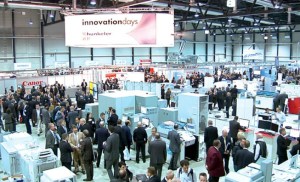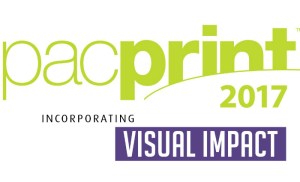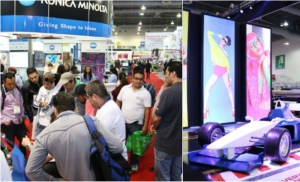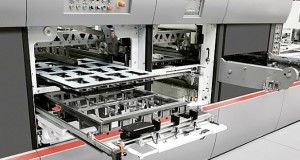
| Post-press binding and finishing in commercial print, packaging, sign and display graphics and other sectors will be a key attraction at drupa 2016. As they say, it is not finished until it is finished – and for many companies, there are still significant opportunities for improving throughput and productivity as well as reducing costs in their post-press departments. |
All segments of the market are facing similar challenges. Shorter run lengths, faster time to market, more versioned and variable content – while each segment has slightly different challenges, they are all facing this trifecta, and as a result, are moving to an increasingly digital workflow. While significant focus has been placed on the benefits of digital printing, the analogue technologies – offset and flexo, most notably – are also moving to workflows that benefit from faster make-ready times, less waste and fewer touch points in the manufacturing process.
Finishing processes – both set-up and operation – are often still highly time-consuming, labour-intensive, leading to high dependency on skilled operators and prone to errors and waste of costly work in process. The challenge for printers and packaging converters is to implement post-press operations that circumvent these barriers to production efficiency.
Already, prepress and print have benefited from technologies that speed work through the production process, but for many companies, post-press processes are still a bottleneck, perhaps the last hold-out in the analogue-to-digital transformation. Yoshihiro Oe, general manager export, Europe and Africa Business Alliance at Horizon commented, “Many customers are still primarily focusing on investment in the prepress and press areas and less on finishing; this is a challenge we face.”
However, that is rapidly changing and we will see many advances at drupa 2016 toward making post-press processes as efficient as the rest of the production workflow as well as a stronger interest in these developments on the part of end users.
Darryl Danielli, chief editor of UK-based PrintWeek says, “Historically post-press was always seen as the industry’s Cinderella technology, taken for granted, undervalued and overlooked. But as run lengths fall and turnaround times come under more pressure, advances in post-press automation and integration are becoming increasingly important as printers realise that the latest finishing technologies can not only ease production bottlenecks, but actually generate new opportunities. I’ve no doubt doubt that the headlines at drupa 2016 will be dominated by digital technologies, but the switched-on printers will all make a beeline for the post-press halls, because they know that is where they will see new ways of unlocking digital’s potential.”
Begin with the end in mind
How a job will be finished must be taken into consideration from the beginning of the design and production process. Impositions that are most efficient for the printed sheet may not be the same impositions that are efficient in post-press, as each piece of finishing equipment requires its own imposition; and these two efficiencies must be well balanced for a smooth workflow with minimal waste. And automation is key. For many companies there is already significant automation in the prepress-to-print process, but less so in the bindery. Manual machine set-up can be time consuming and error prone, often requiring highly skilled workers and production of overs to allow for anticipated waste. To the extent machine setup can be automated based on job ticketing information, bar codes, marks and the like, errors are less likely to occur, the number of overs required can often be significantly reduced, and less skilled workers can be utilised in the post-press area.
Jerry Sturnick, Xerox finishing business manager says,“You do not want to be a commodity printer these days, even in short run, and value-added post-press solutions are a good way to move out of the commodity zone,”.
Xerox has played a leadership role in finishing automation since the launch of its ground-breaking DocuTech Production Press in 1990 and the development of its Digital Finishing Architecture (DFA) that now includes dual mode configurations, which allows the same finishing solution to support both inline and offline workflows.
Xerox has assembled a diverse portfolio of finishing partners over the last 30 years. Sturnick says, “We are seeing that about one-third of digital page volume is finished inline with the other two-thirds offline,” he adds. “That’s why we introduced a dual mode feeder at drupa 2012 that uses the same DFA interface to direct sheets to inline or offline finishing with no change in software required.” Xerox is extending its finishing partnerships and automation initiatives beyond its traditional sheet-fed environment into production inkjet and packaging.
Another great example of workflow automation at work post-press is Georgia based Benson Integrated Marketing Solutions which processes 200+ jobs per day. Peter Xierten, director of Systems and Information Technology, says, “Saving three to five minutes per job on cutting set-up adds up to two or three hours per day saved in cutting time. We now have one operator working one shift (since implementing a finishing automation solution), whereas before we needed two cutters working all day, two shifts and overtime.”
Modularity increases flexibility
It is also important to note that many finishing vendors, especially in the transactional, direct mail and commercial print spaces, including MBO, Muller Martini and Horizon, offer modular finishing solutions that can be configured on the fly as production needs change. This approach results in more flexibility and better utilisation of and ROI for post-press investments.
MBO is a great example of modularity at work. The company offers a wide variety of separate but compatible modules that are mobile and interchangeable, creating a mix-and-match finishing department. The company also describes a Parking Lot Concept, with an unwinder and sheeter at its core.
The company says, “With this core in place, a printer needs only to purchase the modules necessary for a given job. It is also an ideal model for printers who expect growth since adding modules to the Parking Lot is more cost effective than purchasing entirely new solutions. With numerous modules on hand, a printer needs only to roll modules into place to create one-step finishing production systems.”
Masters of mail
Direct mail is not going away anytime soon. And while transactional mail has been on the decline in many regions for some time, that is not going away anytime soon, either.
Despite all the hype surrounding digital marketing – and the investments brands are making in digital media – even among younger consumers 92 per cent say they prefer direct mail for making purchasing decisions, with 67 per cent of consumers overall expressing this preference. And, according to a Pitney Bowes survey, 76 per cent of small businesses say their ideal marketing strategy encompasses a combination of both print
and digital communication.
In the direct mail segment, automation is key, both from a cost perspective and to prevent errors. In addition to automated inserter setup, look for inspection and real-time reporting systems such as those from Ironsides Technology, Videk and others, to play a growing role.
Both transaction and direct mail have already seen significant automation but there is room for more. A good role model is UK-based Capita Document & Information Services, which has implemented a fully automated, as-near-lights-out-as-you-can-get mail operation. Capita chose to work with Ironsides Technology to implement automated production tracking with an umbrella solution that integrates the end-to-end workflow across the production platform as well as enabling quality control and real-time reporting. This unifying solution enabled Capita to meet its goal of complete traceability from composition through final preparation for entry into the mail stream. And operators rarely touch mail packets, even when reprints are required. Operations managers know exactly where each and every page is in the production process at a given point in time, enabling much more effective management of the overall production process.
High value finishing
Regardless of the print technology being used, there are a growing number of digital finishing solutions that add value to the final printed product along with reduced time to market, reduced waste and cost-effective finishing of short to medium runs. And their value is being recognised by buyers and industry associations alike. High value finishing is one way to decommoditise print, mitigating price-based buying decisions.
Israel-based Highcon was just named a recipient of the prestigious Printing Industries of America 2015 InterTech Award for Technology Innovation for its digital cutting, creasing and laser die cutting machine for converting paper, labels, folding carton and microflute, which was introduced at drupa 2012.
Boutwell Owens was the first North American packaging converter to implement the Highcon solution. In addition to enabling cost effective production of small runs and speeding time to market, these types of digital solutions open new doors for brand owners, designers, printers and converters alike.
Ward McLaughlin, CEO Boutwell Owens says, “When you have a structural designer that has been told for so many years that you can’t do certain things, today it is all feasible and the handcuffs are off. The world is open; we are no longer restricted by tooling and cost. People can do things they never before imagined.”
Other suppliers that offer digitally-enabled high value finishing solutions include the Scodix family of digital enhancement presses that offer post-print addition of variable density embossing and gloss and now digital foiling; and MGI with coating and foiling options. Others, like Kama, Therm-o-Type, Hunkeler and Standard Finishing, offer die cutting and perforating solutions optimised for short runs. Kama also offers hot foil, embossing and in-register holograms for even more added value.
Digital press manufacturers such as Canon, EFI, HP Indigo, Kodak, Ricoh, Xeikon and Xerox are partnering with these post-press suppliers to offer in-line and near-line laser die cutting, coating and other advanced post-press capabilities designed for short-run and one-off efficiencies as well as medium run length production quantities. In addition, digital presses from these companies also offer clear toners that act as a coating agent as well as adding pop to images.
All of these capabilities contribute to the overall value of print, adding to the look and feel of printed pieces with gloss, satin or matte finishes, digital embossing, innovative cutting, foiling and other value of print, adding to the look and feel of printed pieces with gloss, satin or matte finishes, digital embossing, innovative cutting, foiling and other special effects. Where print itself can often be a commodity, adding these types of specialty finishing increases the value of print, does a better job of catching the attention of recipients, and can help marketers get their messages out in a way that is difficult to do with digital communications.
Packaging perfection
Packaging converters are also benefiting from digital workflows. The digital die cutting and finishing techniques discussed above, combined with digital printing, are making it easier for converters to offer not only small lot finished packages but also faster, more cost effective mock-ups and samples often produced using the same substrates and printing processes that will used for the final product.
There are also a growing number of cutting tables from vendors such as Esko, Mimaki and Zund that are designed to quickly deliver shorter runs of finished goods for use as final product or for samples/mock-ups in the packaging, commercial print and sign/display graphics markets. These companies also offer sophisticated software, such as Esko’s i-Cut Suite, as well as tool sets that speed setup and make these devices easier and more efficient to use.
Jef Stoffels, director Corporate Marketing at Esko says, “As the continued high growth for these solutions seems to prove, the ability to produce one-offs or short run finishing fast and precise has become a standard need in the graphic arts industry for a wide range of applications.”
Some packaging solutions providers such as Bobst are turning their attention to increased efficiency and reduced make-ready times for labels, flexible materials, folding carton and corrugated applications as well as the ability to integrate with other systems converters have in place.
Bobst’s recent acquisition of a majority stake in Nuova Gidue, a company that began introducing digitally-enabled solutions for the labels and packaging market in 2000, sends a signal about its future intent. Expect to see this trend continue and accelerate. Look to see these companies move upstream as well.
For example, the 2014 Bobst annual report contains this statement that provides additional insight into future strategies: “On the Digital Packaging Solutions side, in 2015 we will be installing pre series machines for digital printing at corrugated board sites.”
And look for press manufacturers to move further downstream in the production process. Heidelberg, for example, engineered an outsourcing deal with Chinese manufacturer Masterwork Machinery in 2014, resulting in a new die cutter and additions to its folder-gluer line the same year.
Books on the Horizon
Book printing is an area where digital has made a significant impact, with respect to both printing and finishing. Many book printers have implemented production inkjet printing technology that is replacing offset volumes, especially as the quality of these systems improves and the range of functional substrates increases. Digital lines for book binding have also made huge strides.
Avaiable in New Zealand from Currie Group, Horizon has a stacking solution for B2 digital presses which converts digitally printed B2 sheets into any required sheet size down to A6, collating them in page order to form book blocks, resulting in print to book block with minimal touch points.
MBO also offers a fully variable book block production solution capable of variable format, page count, signatures and more. And Horizon, Kolbus and others offer automated digital-conventional-hybrid book finishing lines that can be configured to meet each plant’s specific manufacturing needs, efficiently producing both perfect bound and case bound books.
Hunkeler has a smart book solution for short run book production. It starts with cold glue pre-gluing of the book block to prevent slippage as the block proceeds through the rest of the binding process. Book sizes are dynamically adjusted, so that each book that comes off the line can be a different size and thickness. Glued book blocks are then handed off to an inline perfect binder, which can be sourced from a variety of different manufacturers. This is one example of the advanced binding solutions now available to printers. Israeli book printing company Cordoba added the Hunkeler modular book block solution to its Kodak production inkjet press earlier this year in a nearline configuration in order to address decreasing run lengths as a result of changes in the law in Israel that prevent heavy discounting that was a standard practice in the country. The installation was timely, as the company has seen a 60% to 70% reduction in volume for black and white book printing, making it inefficient for some titles to be produced using offset printing.
And, of course, especially for perfect-bound books, lamination is important to product printed covers. Providers of laminating solutions such as Neschen and Sihl are working hard to optimise those for an ever-growing variety of digital toner and ink types to ensure high quality adhesion.
Wrapping it up
If post-press is a bottleneck in your organisation, or if you are considering the purchase of new presses, begin with the end in mind.
Be sure to engage post-press vendors throughout the evaluation process to take advantage of their expertise and to make sure that your ultimate configuration is the best possible match to your requirements. Most of these suppliers offer pre-sale consulting services that can help ensure that you make the right decisions in this important area.
Keep in mind that in post-press, it is especially important to ensure flexibility in your configuration – the ability to add and subtract modules, reconfigure on the fly and more – especially as new customer requirements emerge or new technologies come to market that can improve post-press productivity. And at drupa 2016, take the Cinderella story to heart by spending quality time looking at all of the advances in post-press that can make your operation more efficient and effective.
Cary Sherburne is senior editor at WhatTheyThink.com.

Key trend #1
Humanless print production
The first and most intriguing revelation was the prospect of automation being taken to its ultimate degree, with the elimination of people from the print production process. Heidelberg told us it was aiming to have its presses as self-managing print manufacturing units.What it means by this is no printers involved. It already has the means to load and unload paper automatically and presumably it is looking at some sort of cassette system for the plates, or is maybe thinking of the time when plates become redundant. It did launch its first inkjet press, the Primefire 106 of which more later, and an inking system like the big webs have.
But as well as no print staff, it is also working to having the press organise its own servicing; tell a service centre what needs doing and when; organise its own production schedule according upcoming jobs in the digital job file, based on delivery schedule, paper stocks and the like; and organise its own consumables – paper and inks – again based on what jobs are coming up.
Then Fuijfilm told us it has developed a lights out book production manufacturing plant, based on its Jetpress 540W digital web press allied with digitally controlled finishing equipment, all in a factory controlled by a non-linear automated robotic system from a US developer Epac.
Fujifilm says it means that the entire printing process, when using its Jetpress digital print systems, can run with no humans involved, the software and the robots taking care of the production. Initially it will be developed for short run book printing, although it is not a big step to move to producing the multiple different product types typically produced in a print plant. According to the company, an entire new book, printed and bound, and with variable data if required, will be produced every six seconds in the automated plant. Fujifilm says the lights out factory will deliver unparalleled efficiencies, and will produce unmatched quality of print, with zero waste.
Fujifilm did not go into details on the finishing but at drupa we saw new systems. For instance, the Muller Martini Infinitrim which can produce books of infinitely variable trimmed sizes automatically with barcodes on the book block telling the Infinitrim which size to trim to.
So is it saynora to humans? Well it is now on the horizon. How far out that horizon is, and whether we will ever reach it is a big question.
Key Trend #2
Prepress Collaboration
Prepress played a huge role at this year’s drupa as suppliers to the industry and their customers continued their drive toward increased automation and efficiency. From faster, more accurate and sustainable platemaking to digital front ends (DFE) and colour management enhancements, no-one should have left the show without a number of new ideas about how to streamline operations in the workflow that leads up to the pressroom.
The trend of note here – and in fact, across almost all disciplines – was the increase in collaboration among vendors, even those who are or have been competitors.
It signifies a recognition that single-vendor operations are a thing of the past, and no one vendor can provide everything that is needed in a modern printing operation. To the extent they collaborate with each other, the more they each will have a satisfied customer base. EFI and Esko, Landa and Kodak Prinergy, Konica Minollta with Tharstern MIS and Vpress W2P, all examples.
Then there was the development of app stores, hosted by a developer, and open to third parties, which the developers hope will enable users to optimise their solutions and open up new opportunities.
So HP launched PrintOS which it describes as a business operating system. With PrintOS, HP envisions an integrated, multi-vendor environment through a cloud-based operating system that changes the way operations manage print production. At drupa, HP announced that more than 500 presses at over 300 customer sites are now connected to PrintOS. The vision is to continue to add HP and third-party apps to the PrintOS app store, making implementation modular and convenient.
And Enfocus Switch which is an important solution for workflow integration, often overlooked and under appreciated, has a significant base of Switch configurators and pre-designed workflows available, but Enfocus is taking that to the next level with its own Appstore, where users can access applications that have been developed for the Switch community. Enfocus reports dozens of interested app creators and more apps introduced daily.
Key Trend #3
Cloud computing
The cloud was everywhere, (with real rain for the first week). Increasingly, printers are becoming more comfortable with a cloud-based business model, and suppliers to the industry are rallying with a plethora of cloud-based offerings. Cloud-based solutions were dominant in the drupa Innovation Parc (dip) where many smaller companies have the opportunity to affordably show their wares and take part in this important show.
Cloud is a huge win for printers, particularly the SMEs. It means they need minimal IT infrastructure, they do not need an IT specialist, they never need to buy upgrades, and there are never any compatibility issues, as everyone is always working for the same version. And it is also easier on the pocket as it is a monthly fee rather than an upfront cost. It is also bi-directional by passing your own company, so for instance on a press it will automatically communicate with the developer.
Key Trend # 4
Inkjet
Inkjet printing systems were front and centre of drupa, both webfed and sheetfed. The benefits of inkjet are those associated with digital, of no makeready and variable data, but with high speed, and sheet sizes that are difficult with cutsheet toner systems.
Actually the term inkjet is a bit of a misnomer, as it is now being used in a generic sense to include virtually all types of non-toner digital printing. This includes the liquid toner used by HP on its Indigo presses – housed on the biggest stand on the show, dwarfing all others at 6200sqm – including all its new presses.
The HP stand was packed from start to finish as HP showed a raft of innovation for a multitude of applications, ranging from commercial print, packaging, to home décor. HP is investing humungous amounts of cash into commercial printing solutions under its Indigo brand, which is great news for printers, not only in the solutions it is developing but also as a vote of confidence in the future of print.
Liquid toner is also the technology that Xeikon is using on its new Trillium inkjet web-fed press range, and by Ryobi MHI (RMGT) on its B2 digital sheetfed press DP7, that it claims will run three times faster than anyone else’s at 8000sph, and on any stock.
Slated for release some time next year the B2 sized DP7 has Miyakoshi print heads, and that speed takes it into offset territory, whereas most of the B2 inkjet presses are running around the 3000sph marker.
Even the toner king Xerox is now into inkjet printing, with a B3 cutsheet printer the Brenva and a webfed printer the Trivor. Both come from the technology that Xerox got when it acquired the French Impika inkjet company. Xerox says B2 sheetfed is next on the horizon.
Toner rival Canon is also in B3 cutsheet with its i300 printer, and showed a four-colour B2 inkjet printer the Voyager, which it says prints photo quality, it is a re-engineering of its Dream Labo photor printer.
Ricoh already has inkjet with its high volume webfed printers, and at drupa launched its VC60000 which it says will print for the commercial market. Konica Minolta has launched its B2 sheetfed inkjet AccuriJet KM-1, which is branded by Komori as the Impremia 29. Konica Minolta also showed a B1 digital folding carton press, a huge piece of kit, which it hopes to have available in the next couple of years.
Landa was a focal point at the show. Four years ago, he introduced digital inkjet nano technology which promised offset quality at offset speeds on offset stocks but with the digital benefits of no makeready and no plates. So what did we see this time four years later. There has been progress; the presses were printing and sheets were available. However, the prints are not yet commercial quality. They had no lines, edges or text, and tended to be impressionist style images with little definition, and mainly oranges, greens and browns. But Landa did have proofs produced in his lab which were at a commercial level. Can he bridge the gap? We will have to wait and see. The first presses are slated to go into beta testing in 12-18 months’ time.
Landa was doing demonstrations of the presses, in a range that has been slimmed down to four, a B1 sheetfed for folding carton, a B1 duplex (prints both sides) sheetfed for commercial printing, a webfed for publication printing and a webfed for flexo printing.
Komori which is selling the Landa S10 as the Komori Impremia S40 has halved the top speed to 6,500 in a bid to ensure quality.
So will he do it? That is the big question that went unanswered at drupa. Landa was nothing but confident though, and racked up some major orders, although they can more properly be called options to buy should the press become available, including four in Australasia – Blue Star, trade printer Hero Print, online printer Vistaprint, and an un-named flexo printer, who will join CMYKhub which ordered one last time around.
Key Trend #5
What does the rise of inkjet mean for offset presses
There were no new offset presses launched at drupa, and no A3 presses on show at all.
The A3 press market has been destroyed by digital presses from the likes of Fuji Xerox, Canon, Konica and Ricoh, and it is easy to see why, when instead of buying a four colour offset press, platemaking equipment and finishing kit in an investment of well over $1m and then manning it with expensive staff, a printer could spend little over $100,000 and have a digital printer with no makeready and online finishing that can be operated by one unskilled person.
The big question: will this happen to the B2 and B1 commercial markets? The answer has to be no, well not for the moment at least. Partly because the B2 inkjet presses are not a tenth the price of offset presses, and partly because the quality and consistency of offset print is a high benchmark. However in the years to come, that will change. In fact, the B2 Indigo presses from HP are widely acknowledged to have reached that level. I have already mentioned the B2 Ryobi, and the Landa presses if he gets it right may have a huge impact.
While they had no new presses, the offset manufacturers are making tremendous strides in productivity, with a host of inline features and ultra-quick makeready, the Heidelberg XL for instance was printing three jobs in just eight minutes.
Key Trend #6
Hybrid presses
Leading on from this is the rise of hybrid presses, which saw almost all the major offset press manufacturers partner up with inkjet developers to launch presses, and particularly in folding carton inkjet printing. Apparently there is a $400bn short run folding carton market out there, and this drupa saw a rush of vendors pile into this market. It also has to be said its a market where the quality standards are perhaps not so exacting as commercial print, if you think about the difference between a box on a supermarket shelf compared with Vogue magazine.
These hybrid presses included Heidelberg with its Primefire 106, co-developed with Fujifilm, which is the first B1 inkjet press available, the B1 Landa S10 co-developed with Komori, the Screen BHS inkjet corrugators, the KBA Xerox VariJet 106, Komori with the Impremia S40 co-developed with Landa, Ryobi with its DP7 co-developed with Miyakoshi. Screen has teamed up with BHS, the world’s biggest corrugated machinery manufacturer, and together they are developing a digital corrugated press. These partnerships make sense, the machinery guys have the paper feed, transport and delivery systems down to a tee, while the inkjet guys know how to put a billion drops of ink onto paper. Folding carton printing was not restricted to hybrid presses though, EFI launched a massive Nozomi at 100 foot long pumping out 75 metres a minute B1 sheetfed carton, Konica Minolta showed a similar sized press B1 sheetfed for folding carton, meanwhile Bobst said it was in front of everyone with two B1 inkjet sheetfed folding carton presses already in beta testing in Germany and Switzerland. Durst was a surprise entrant into digital folding carton with its B1 digital press the Rho 130 SPC with a print speed of up to 9350sqm per hour.
Key Trend #7
Digital Finishing
Finally finishing, for so long the Cinderella of the production process, but no more thanks to innovation and digitalisation. The Muller Martini Infinitrim can produce an infinite variety of book sizes with no slowdown in production for makeready, and the company’s CEO told us that makeready on finishing systems that was taking an hour 20 years ago and five minutes four years ago is now taking half a second. Companies such as Scodix and MGI are pioneering new enhancement and embellishing techniques that allow short runs, and others such as Highcon and Xeikon are developing new die cutting solutions. These names are new, bit older established developers are launching innovations too, there was a new die cutting system from Polar, which uses a laser to cut the board, then a robot to stack them.
Touching the future?
So drupa 2016, automated printing, cloud computing, inkjet printing, offset developments, was it the most important ever, we can’t say, but we can certainly say it gave a clear indication of the future of print.
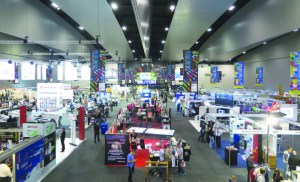
Visual Impact Exhibitions, combined with Image Expo, hosts the Visual Impact shows to highlight the latest technologies, trends, and solutions in the visual graphics industries. This includes signage, digital printing, engraving, routing, awards, vinyl application, design, airbrush, screen printing, and display solutions

For over 20 years, Foodtech Packtech has run as New Zealand’s largest food manufacturing, packaging and processing technology trade show. Co-located in 2016 with the Materials Handling & Logistics Expo, the event will attract over 250 local and international exhibiting companies and some 4,500 visitors.
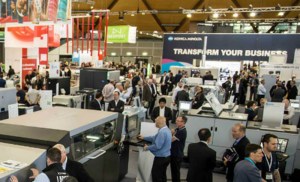
PrintEx, with sister show PacPrint, offer comprehensive and relevant business to business events serving the evolving needs to the printing, sign and graphic communications industry. Held bi-ennially alternating between Sydney and Melbourne, the shows provide a forum for technology, innovation and education.
PrintEx19 will co-locate with Visual Impact – one of Australasia’s leading showcases for the signage, engraving, display and wide format market and Label and Packaging Expo. PrintEx19 taking place on the 13th – 16th August, provides the industry with intelligence, ideas, information and inspiration to survive, and prosper, into the future.
With over 6,000 square metres of equipment and technology on display, an industry leading education and networking programme and an audience of more than 8,000 industry professionals, PrintEx will brings buyer and suppliers and manufacturers together.

